#Versailles 1674
Text

treppenszene
1.
Hat er eine Venusmuschel im Rücken? Hinter sich noch das Wasser wissend (eau o), an jener Stelle der Treppe, wo die Sammlung ins Ergießen kippt, auf dieser Schwelle, Kehre oder Wendung steht der Souverän zum Empfang, in der Hand einen Stab, ein kleines Polobjekt, eine Bewegungshilfe. Niemand hat die Absicht zu bestreiten, dass Regierung mit Frivolität einhergeht.
Jean-Léon Gérôme, der auch die Hamburger Version der Phryne gemalt hat, hat einen irren Sinn für die Phantasien europäischer Bild- und Gesetzgebung, die im Bürgertum ihre Hemmung verloren haben, aber dadurch die vorrevolutionären Bildregime bis zur Kenntlichkeit entstellen. Dieses Bild ist eine Karikatur, ob sie ironisch oder unrealistisch ist, das ist fraglich.
2.
Man sagt von Tiepolos Fresken für die Treppenszene in Würzburg, sie seien ironisch und melancholisch, das glaube ich auch. Von diesem Bild hier würde ich eher das Gegenteil behaupten, wenn es das gäbe. Was faszinierend ist: aus dem Motiv eines Souveräns, der genau an derjenigen Stelle seine Bewegung einhält, an der die Sammlung ins Ergießen kippt, ist noch Eisensteins Treppenszene entwickelbar. Der macht daraus nämlich, genau daraus möchte man sagen, was anderes: den Dammbruch, den Exzess der Herrschaft, des Gesetzes und der Gewalt. Einen Dammbruch hämmert Eisenstein seinen Zuschauern ein, wenn er immer wieder wiederholt, wie die Masse nach den Schüssen zerstiebt und sich über die eben noch leere Treppe ergießt. Immer wieder das Motiv: Treppe leer, jetzt ergießt sich die Masse über die Stufen, nicht im Bewußtsein, das revolutionäre Subjekt zu sein, jetzt nicht.
3.
Peter Stephan schreibt in seinem Buch zur Würzburger Residenz, sie würde, ausgehend vom Vestibül über die Schichten des Treppenhauses hoch zu den Fresken Tiepolos "die traditionelle Bedeutung der Treppe als Metapher für den Tugendweg wiederbeleb[en]".
Da ist was dran, an dem klebt aber nochmal anderes. So eine Treppe führt nicht nur metaphorisch "von den bestehenden Mühen des irdischen Daseins zur Unsterblichkeit", sie führt metaphorisch nicht (nur) von den Mühen des irdischen Daseins zur Unsterblichkeit. Stephan behauptet, dies Würzburger Treppenszene folge dem Grundsatz per aspera ad astra. Diese Treppenszene führt auch ganz real von den Mühen des irdischen Daseins weg, da oben wird, salopp gesagt, immer ein Weißweinchen im Kühlschrank stehen, den einem auch noch jemand bringt. Der Aufstieg der Treppe ist nicht nur metaphorisch heilend, wenn man nicht übertreibt, ist so ein bisschen Sport und Gymnastik gut für die Muskaltur, die Knochen, des Herz und den Blutkreislauf. Macht auch Appetit, d.h. nach Thomas Hobbes: Hoffnung mit dem Anschein, etwas stünde bevor. Treppen lassen nun mal hoppen.
Freud, der die Treppenszene nicht für das nimmt, was sie ist, sondern als Bild des Geschlechtsverkehrs deutet, müsste auch einräumen, dass eine reale Treppe doch auch das macht, was der Geschlechtsverkehr macht: pochende Herzen, intensivere Atmung und eine gewisse Zufriedenheit, wenn man oben angelangt ist, dann hat man was geschafft. Wieso dann eigentlich Bild, Imagination, Traum, wieso Übersetzung und Zensur, wie Freud behauptet, wenn es doch diese Entsprechungen gibt? Wieso noch für etwas anderes stehen, wenn man selbst schon steht? Vielleicht übersetzt eine Treppenszene nichts, weil in ihr schon vorkommt, was anderswo auch vorkommt. Die Treppenszene ist metaphorisch und sie ist völlig unmetaphorisch.
#treppenszene#jean léon gérôme#1878#réception du grand condé par louis XIV#Versailles 1674#wissenswallfahrt
3 notes
·
View notes
Text

This painting, done by Charles Le Brun (French, 1619-1690) in 1674 or 1679, is created using black and white chalks on a piece of Japanese paper. It was a part of a study done by the artist for decorating one of the staircases in the Palace of Versailles. The staircase was, sadly, destroyed upon the order of Louis XV.
Apollo is supposed to be leaning onto His golden tripod, holding onto a bow that He has just used to slay the Python; the God's pose is relaxed, gaze - serene.
Photo source: 🏺
196 notes
·
View notes
Text
CHÂTEAU DE CLAGNY (WIP)
Part 1 - Exteriors
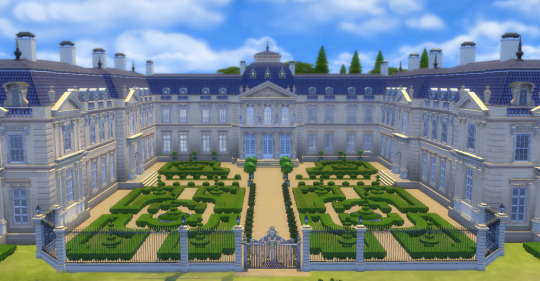
The Château de Clagny was a French country house that stood northeast of the Château de Versailles; it was designed by Jules Hardouin-Mansart for Madame de Montespan between 1674 and 1680. Although among the most important of the private residences designed by this great architect, it was demolished in 1769 after years of neglect.
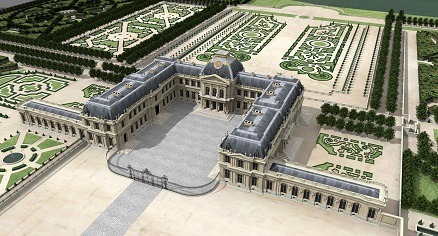
According to the writings of Madame de Sévigné, it would have cost not less than 2 million livres, and to have kept 1200 workers occupied. André Le Nôtre designed the layout of the gardens. Currently, its appearance can only be traced through the engravings made of it, and scattered references in the archives of the Bâtiments du Roi.
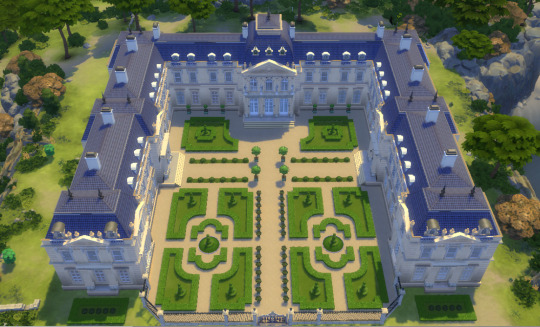

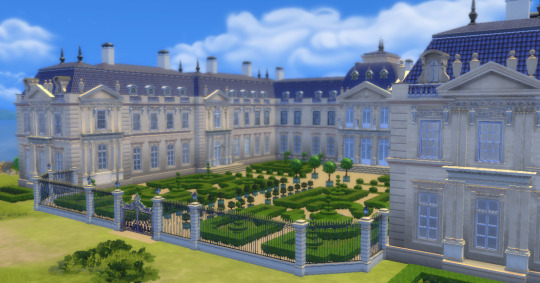



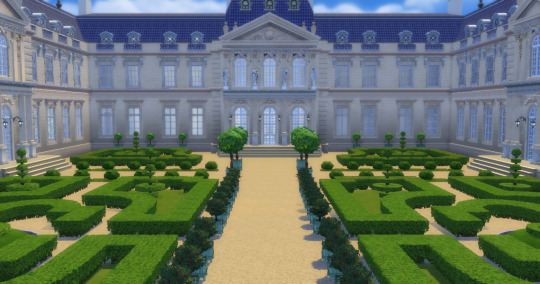






104 notes
·
View notes
Text
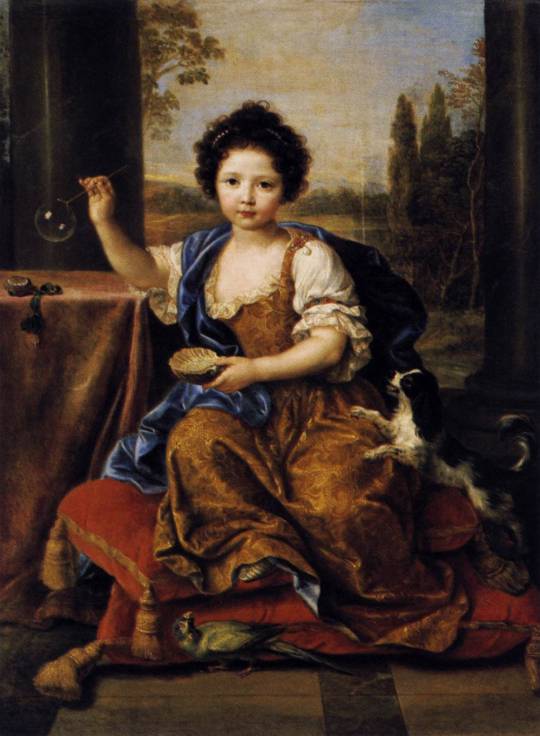
"Louise-Marie de Bourbon, dite Mademoiselle de Tours; La fillette aux bulles de savon"
By Pierre Mignard
Oil Painting, 1681.
Château de Versailles.



PORTRAIT SUBJECT
La fillette aux bulles de savon, or the commonly found English title, Girl Blowing Soap Bubbles, is a portrait of innocence during the Franco-Dutch War.
The child shown is Louise-Marie de Bourbon, the daughter of the Sun King, Louis XIV, and his Maîtresse-en-titre, Françoise-Athénaïs de Rochechouart (Madame de Montespan). I'm sorry, I don't know why they popped off with the names like that when they're planning to reuse Marie and Louis fifty times over ptdr. Louise-Marie, affectionately known as Toutou, was an illegitimate birth (1674), later legitimized by her father when she was around two years old. She held the title of Mademoiselle de Tours from then until her untimely death in 1681.
According to sources, Mignard's painting of the six-year-old girl was finished posthumously. But, her innocence is held delicately, frozen in time on canvas.

THEMES OF CHILDHOOD INNOCENCE (TL;DR: YAPANESE)
Mignard's choice to paint Louise-Marie as an actual child was uncommon for the time (even centuries later, believe it or not; maybe not so good examples, but for argument-sake: Louis XV by Hyacinthe Rigaud, Mariana Victoria of Spain by Nicolas de Largillierre, Phillip II, Duke of Orléans, Reagent of France by Largillierre, and Élisabeth Charlotte d'Orléans, "Mademoiselle de Chartres" by Largillierre -- apologies for throwing you strays, man, I'm trying to finish writing this and your children portraits were on the same website next to each other x), as young royalty are painted either as babies (unbreeched/baptize gown) or as tiny adults (fixed in uncomfortable poses and wearing clothes a monarch would), no in between. Here, Louise-Marie is playing with bubbles, her dog jumping towards it, and she looks carefree, still with chubby cheeks of rose. It doesn't help much that children were seen as heirs to the family fortune, especially during a time when parents had multiple kids due to illness (premature death) and bringing in income (need I explain more... *cough cough* coal mines... a bit anachronistic, sorry breaker boys, some other time we'll discuss y'all).
A painting such as this one, showing a realistic human experience from a royal status and that of a child BEING a child, innocence still intact, is quite important, even in today's form. We take childhood for granted, and kids are forced to grow up despite having more rights now than before. It can be a portrait to remind us that innocence is vital (a lack of childhood is detrimental as the experience is needed in order to mature mentally and emotionally when entering the teen and adult stages of life), but also that we as humans weren't so different from back then (sure, you can claim we bathe more than they do despite your husband still not washing his ass, but my heavens, did the thought 'wait, they had bubbles back then' ever occur to you?).
Genuinely, I was going to pull a La Muse Verte (the post where I briefly explained the history of absinthe) and go into the history of bubbles... because you gotta admit, that'd be fun for the both of us. However, delving into the background and theme of this painting became more heartbreaking for me. The bubble idea isn't gone, but it'll be postponed as a full history lesson post (and, yes, Mignard's painting of the immortalized Toutou will be recycled).

FURTHER READING (EXTRA SYMBOLISTIC DETAIL)
Plenty more symbolism is present, but I highly recommend you all check out L'Art en Tête's in-depth article on Mignard's beautiful portrait. I did regurgitate some of the author's points in this because I thought they were brilliant, and you can tell they have an art-history degree, so I'm begging you to go over there for more detail if interested!

#art#painting#oil painting#artwork#history#french#french art#17th century#1600s#1600s art#late 1600s#17th century art#baroque#Pierre Mignard#Château de Versailles#versailles#Royalty#French history#louis xiv#sun king#symbolism#louise-marie#mademoiselle#art history#house of bourbon#early modern period#kingdom of france
6 notes
·
View notes
Photo

LES LUMIÈRES DE VERSAILLES « Messieurs, voilà le roi d’Espagne. La naissance l’appelait à cette couronne, le feu roi [d’Espagne] aussi par son testament, toute la nation l’a souhaité […] C’était l’ordre du ciel, je l’ai accordé avec plaisir. » LOUIS XIV (1638-1715), à la foule des courtisans, après un Conseil resté célèbre, 16 novembre 1700. Mémoires (posthume), Saint-Simon. 1- UNE IDÉE DE PEINTURE Philippe V (1683-1746) par le peintre Jean Ranc (1674-1735) Il s'agit d'un portrait officiel de Philippe V, le premier roi Bourbon d'Espagne. Petit-fils de Louis XIV de France, il naquit à Versailles le 19 décembre 1683 et fut proclamé roi d'Espagne en 1700. 2- UNE MUSIQUE D'UN BONHEUR CONTAGIEUX Lully: Les Folies d'Espagne https://youtu.be/aC02mduyq0E La Folia, également appelée Follia (en italien) ou Folies d'Espagne, est une danse apparue au xve siècle probablement au Portugal dont le thème a servi pour des variations à plus de 150 compositeurs, de Lully à Sergueï Rachmaninov en passant par Arcangelo Corelli, Antonio Vivaldi, et Vangélis Papathanassíou, et qui se retrouve encore dans des cantiques populaires comme Perdono, mio Dio. Jean-Baptiste Lully Compositeur français d'origine italienne (Florence, 1632 – Paris, 1687) Compositeur, musicien, danseur et chorégraphe, Jean Baptiste Lully a résolument marqué la musique de son temps. Tout son génie repose sur la fusion des traditions musicales italienne et française. #leslumièresdeversailles https://www.instagram.com/p/CqAb-jGMn4I/?igshid=NGJjMDIxMWI=
9 notes
·
View notes
Text

Attributed to Claude Lefebvre (b.1632 - d.1675), 'Portrait of a Girl, presumed to be Marie Anne de Bourbon (b.1666 - d.1739), Mademoiselle de Blois', oil on canvas, c.1674, French, currently in the collection of the Louvre, on long term loan to the Palace of Versailles, France.
Alternatively attributed to Pierre Mignard and Constantijn Netscher (b.1668 - d.1723); formerly in the collection of Dr. Louis la Caze.
#claude lefebvre#unknown sitter#known sitter#known artist#marie anne de bourbon#mademoiselle de blois#oil on canvas#landscape#birds#dogs#french#1670s#louvre#palace of versailles#pierre mignard#constantijn netscher#dr louis la caze
32 notes
·
View notes
Photo

André Bouys - Portrait of the painter Charles de la Fosse - 1688
André Bouys (1656–1740) was a French portrait painter and mezzotint engraver.
Charles de La Fosse (or Lafosse; 15 June 1636 – 13 December 1716) was a French painter born in Paris.
He was one of the most noted and least servile pupils of Le Brun, under whose direction he shared in the chief of the great decorative works undertaken in the reign of Louis XIV. Leaving France in 1662, he spent two years in Rome and three in Venice. The influence of his prolonged studies of Veronese is evident in his Finding of Moses (Louvre), and in his Rape of Proserpine (Louvre), which he presented to the Royal Academy as his diploma picture in 1673. He was at once named assistant professor, and in 1674 the full responsibilities of the office devolved on him, but his engagements did not prevent his accepting in 1689 the invitation of Lord Montagu to decorate Montagu House, situated in Bloomsbury.[
He visited London twice, remaining on the second occasion—together with Jacques Rousseau and Jean-Baptiste Monnoyer more than two years. William III vainly strove to detain him in England by the proposal that he should decorate Hampton Court, for Le Brun was dead, and Jules Mansart pressed La Fosse to return to Paris to take in hand the cupola of Les Invalides. The decorations of Montagu House are destroyed, those of Versailles are restored, and the dome of the Invalides (engraved by Picart and Cochin) is now the only work existing which gives a full measure of his talent. During his latter years La Fosse executed many other important decorations in public buildings and private houses, notably in that of Pierre Crozat, under whose roof he died on 13 December 1716.
The artist's works and conception played a key role in the French art history from shifting the classicism of the French style from the court of Louis XIV towards the lighter and more playful Rococo period's style. La Fosse's style prior to his emergence from the shadow of Le Brun remains a mystery, with very few sheets by him dating earlier than 1680.
14 notes
·
View notes
Text
To convey this message [of power] to foreign monarchs [King Louis XIV] took great care that ambassadors stationed abroad received detailed descriptions of events such as the series of entertainments he gave for the entire court over a six-week period in the summer of 1674. Despite the fact that France was currently engaged in a savage European war, these festivities were of an unparalleled magnificence and luxury. They started on 4 July with a feast, which took place in a glade in the gardens of Versailles. As music played softly, guests took refreshments at marble tables that had been set up in leafy enclosures overlooking a specially constructed pond. In the centre of this was a realistic artificial tree cast in bronze, from whose branches water spurted. Jets also gushed from bronze bowls set in the centres of the tables, carefully designed to minimise splashing. Interspersed among the porcelain tubs full of flowers which surrounded the tables were ice figures of various shapes and sizes, a particularly impressive sight in high summer in an age where refrigeration was unknown. Having eaten their fill, the guests returned to the Chateau, where every window was illuminated with candles. A performance of Alceste then took place in the marble courtyard, converted for the evening into a sumptuous theatre, decorated with orange trees in tubs on marble pedestals and lit by crystal chandeliers.
Five days later a concert was held in the gardens of the Porcelain Trianon, an enchanting pavilion made of Delft tiles that the King had originally constructed for trysts with Mme de Montespan. On 28 July the King gave a supper for the ladies of the court in the octagonal menagerie and this was followed nine days later by an open-air feast in a specially constructed amphitheatre. The enclosure was bordered by grass terraces, ascending in tiers, and was bedecked with apple, pear and apricot trees in tubs, all laden with fruit out of season. A 'sumptuous collation' was provided, concluding with crystallised fruits and sorbets, with every sort of liqueur being served from crystal carafes. The evening terminated with an opera and firework display over the canal. The final offering in this triumphal cycle of entertainments took place ten days later in another grove in the gardens of Versailles. A circular table twenty-four feet in diameter had been set there with the usual array of delicacies. Around its circumference were placed pyramids of fruit, topped with golden balls and linked with festoons of flowers. Afterwards the King and Queen drove by carriage to see Racine's Iphigenia performed in the orangery, where a temporary - albeit exceptionally elaborate - theatre had been improvised. To approach this structure, they passed down a path bordered with grottoes and fountains, and entered through a marble portico, supported by pillars of lapis lazuli. After the play, the guests again congregated in the gardens to see a firework display and illuminations on the canal.
For this final tableau vast figures, artfully lit, were places on stone pedestals embellished with bas-relief friezes. On one of these, captives were depicted huddled at the feet of a triumphant Hercules who was being crowned with flowers and laurels by little children. In this lyrical description of these festivities André Felibien explained that the children 'signified the love of the people who are crowning so many generous exploits' on the part of the King, and that they were binding the captives with garlands of flowers rather than chains to show that 'the domination of the prince who has vanquished them is glorious and sweet'. Whether the subjugated population of the occupied provinces of Flanders would have endorsed this interpretation is questionable. One wonders, too, whether the King's poorer subjects could have shared Felibien's enthusiasm for these sights. Rather, the fact that during the following year the oppressive weight of tax resulted in a series of revolts in various parts of France, tends to support the Abbé Choisy's observation: 'The people were in penury while we talked of nothing but fêtes, ballets and diversions.'
The Affair of the Poisons: Murder, Infanticide and Satanism at the Court of Louis XIV by Anne Somerset
#the affair of the poisons#anne somerset#quote#literature#history#dark academia#dead academia#french history#aesthetic#1600s#17th century#bookblr#dark things#france#the french revolution
1 note
·
View note
Text

Pair of large iron chimeras, French work of the first half of the 18th century.
Mythological animal first described by Homer, the chimera fascinated the Baroque era, eager for strange and exoticism. Jean I Bérain, draughtsman of the Chamber and the King's Office within the Menus Plaisirs from 1674, was one of the great promoters in his compositions at the end of Louis XIV's reign, whether for ewers, clocks or garden sculptures.
Among these are those in naturally painted lead inspired by the fables of Aesop that adorned the labyrinth of the Park of Versailles created in 1677. Destroyed in 1775 to make way for the Queen's Grove, there remains a chimera that is reminiscent of our pair. Similarly, the two confronted chimeras executed by the sculptor Jean Hardy (1653-1737) adorning Le Bassin du Plat-fond du Grand Trianon is also decorated with two confronted chimeras executed by Jean Hardy (1653-1737), embodying this Versailles art that influences both the king's entourage and European princes.
Sotheby’s
10 notes
·
View notes
Photo

Portrait of Mariana Victoria of Spain (1718-1781) (c.1725-1726). Alexis Simon Belle (French, 1674-1734). Oil on canvas. Palace of Versailles.
Mariana Victoria of Spain was an Infanta of Spain by birth and was later the Queen of Portugal as wife of King Joseph I. The eldest daughter of Philip V of Spain and Elisabeth Farnese, she was engaged to the young Louis XV of France at the age of seven. Rejected due to her age, the marriage never took place and she was sent back to Spain. In 1729 she was married to Infante José, son of John V of Portugal and successor to his father as Joseph I of Portugal. She also acted as regent of Portugal during the last months of her husband's life and as advisor to her daughter, Maria I of Portugal, in her reign.
46 notes
·
View notes
Photo

🔵 LIEU | Château de Maintenon et son aqueduc inachevé voulu par Louis XIV (Eure-et-Loir) ➽ https://j.mp/2YuLTuk Si l'existence du château de Maintenon est attestée au XIIe siècle, il fut en partie rebâti dans le style Louis XII au début du XVIe siècle et vendu en 1674 à Françoise d’Aubigné, depuis marquise de Maintenon épousant plus tard Louis XIV en secret, le roi y débutant la construction d'un aqueduc jamais achevé et à même d'amener l'eau de l'Eure à Versailles et à Paris #château #Maintenon #Eure-et-Loir #histoire #Cottereau #surintendant #finances #Louis XII #marquise #aqueduc #Eure #Louis XIV
6 notes
·
View notes
Photo

~ At the death of James II, when his son James Francis Edward Stuart was recognised as King of England by the name of James III by Louis XIV, the Parisian Alexis Simon Belle - born on January 18, 1674 - became the court painter of the new Jacobite suitor. He later returned to his homeland and worked at the French court, making a portrait of the young Louis XV in 1723, preserved in the Palace of Versailles. ~
2 notes
·
View notes
Photo

Boreas Abducting Orithyia, after Gaspard Marsy, c. 1700, Minneapolis Institute of Art: Decorative Arts, Textiles and Sculpture
a bronze reduction fabricated by an unknown craftsman after a larger marble begun by Marsys and completed by Flamen This bronze is a miniature version of one of four marble sculptures representing the four elements (earth, air, fire, and water) commissioned in 1674 for the gardens of the French royal palace at Versailles. This group symbolizes air, a subject taken from the ancient Roman poet Ovid’s Metamorphosis. It depicts the god of the north wind, Boreas, abducting the Athenian princess Orithyia while battling another wind, probably the god Zephyr. Today the original marble version can be found at the Louvre Museum in Paris.
Size: 39 1/2 x 18 1/2 x 19 1/2in., 264.6lb. (100.3 x 47 x 49.5cm, 120kg)
Medium: Bronze (reduction cast)
https://collections.artsmia.org/art/22091/
3 notes
·
View notes
Text
[[OC Character Profile ]]
Theme:
1600s-1700s: Medieval/ Fantasy
Full name:
Louis Auguste, Duke of Maine
Nickname(s):
•Auguste
•Duke
•King
•Prince
Sex/Pronouns:
Male
Birthdate:
March 31, 1670
Age: 22 year old
Powers: None
Skills:
•Fighting
•Sword Fighting
•General Knowledge
•Speaks English and French
[[ About ]]
Personality:
•Romantic
•Lovingly
•Loyal
•Caring
•Charming
•Flirty
•Knowledge
•Courageous
•Daring
•Charismatic
•Attractive
•Dramatic
•Faithful
•Freethinking
•Herioc
Likes:
•Nature
•Moon light
•Tea
•French biscuits
•Alcoholic beverages
•Fancy things
Dislikes:
•Asswholes
•Jerks
•Wars
•Emeries
Background:
Occupation: Duke of Maine
Fears:
•Losing love ones
•The kingdom falling in Ruins
Sexual Orientation: Bisexual
Species: Human
Faceclaim:
•Timothée Chalamet
[[ Relations ]]
Father: Louis XIV of France
Mother: Françoise-Athénaïs de Rochechouart, Marquise de Montespan
Siblings: Louis, Grand Dauphin, Louise de Maisonblanche, Françoise Marie de Bourbon
Significant Other(s):
Multiships
[[ Biography ]]
Louis-Auguste de Bourbon was born at the Château de Saint-Germain-en-Laye on 31 March 1670. He was named Louis after his father[2] and Auguste after the Roman Emperor Augustus. Immediately after his birth, Louis-Auguste was placed in the care of one of his mother's acquaintances, the widowed Madame Scarron, who took him to live in a house on rue de Vaugirard, near the Luxembourg Palace in Paris. His siblings, Louis-César, Louise-Françoise and Louise Marie Anne de Bourbon were also brought there after their births. Their mother, living with the king at Versailles, rarely saw her children, and Madame Scarron took the place of mother in Louis-Auguste's affections.
One of his legs was shorter than the other and Scarron took him to consult, first, a famous quack at Antwerp and later to the waters of Bareges, a small town near the Pyrenees, whither they traveled incognito (she as the marquise de Surgeres). On 19 December 1673, when Louis-Auguste was three years old, Louis XIV legitimised his children by Montespan by letters patent registered by the Parlement de Paris. At this time, Louis-Auguste received the title of duc du Maine. In 1674, at the age of four, Louis-Auguste and his siblings were officially introduced to the court at Versailles. In the same year, he was made a colonel-general of the Swiss Guards. Du Maine's greatest enemy at court became his father's sister-in-law, the duchesse d'Orléans, known at court as Madame.
In her famous correspondence describing life at Versailles, Madame claimed that du Maine was not the son of the king Louis XIV showered him with gifts and titles, and hired the best tutors for him. The maréchal du Luxembourg, a famous military strategist, was put in charge of the child's military training. Despite this, Louis-Auguste never became more than a mediocre soldier. He was made Grand Maître de France. The king also blackmailed his cousin, the wealthy La Grande Mademoiselle, into ceding some of her estates to du Maine in return for the liberation of her imprisoned lover, Antoine Nompar de Caumont, Duke of Lauzun. As a result, Louis-Auguste became the comte d'Eu, sovereign Prince of the Dombes, and duc d'Aumale. He also received the governorship of Languedoc and was awarded the Order of the Holy Spirit.

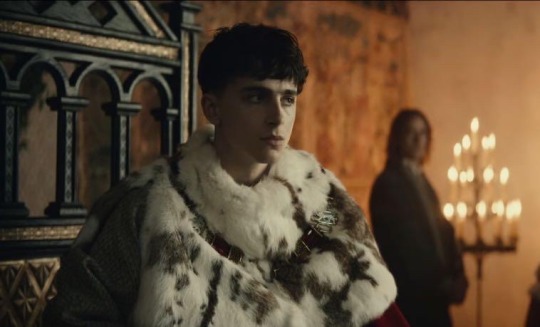
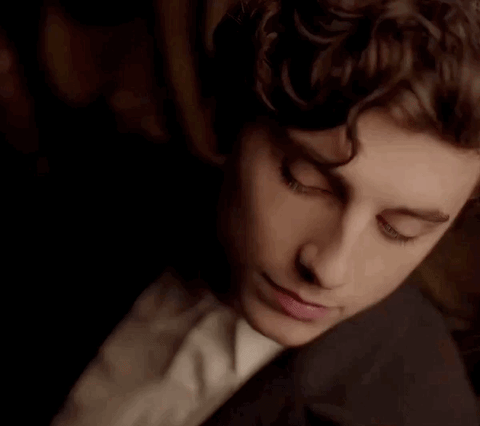

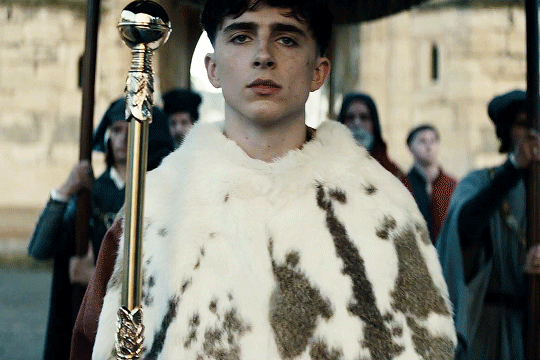

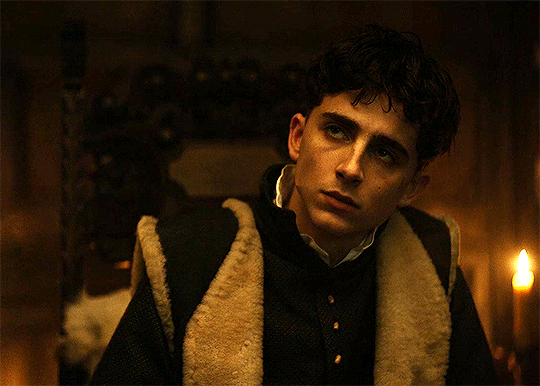

#oc tag#oc roleplay#oc rp#my ocs#france#timothée chalamet#king of france#king and prince#fantasy#lgbtpeople#gayguy#bisexaul#bxb roleplay#original roleplay#roleplay#romantic plot#drama rp
9 notes
·
View notes
Photo
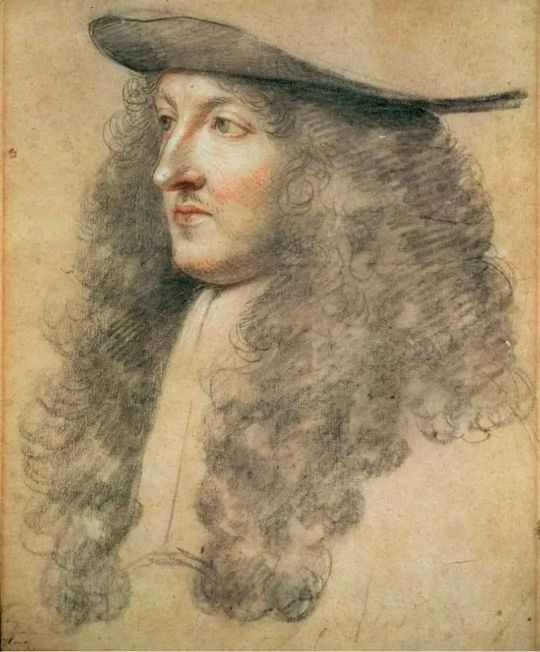
LES LUMIÈRES DE VERSAILLES #leslumièresdeversailles "Il y avait encore d'ailleurs assez de difficulté de le faire réussir: mais à qui peut se vaincre soi-même, il est peu de chose qui puisse résister." Mémoires de Louis XIV pour l'instruction du Dauphin (1860) 1- UNE IDÉE DE PEINTURE Louis XIV par Charles Le Brun, 1663, premier peintre du roi (1619-1690) Versailles lui permet d’exercer toute la fougue de son génie. Il réalise là ses plus grands décors qui se succèdent à un rythme effréné : escalier des Ambassadeurs (1674-78), galerie des Glaces (1678-86), salons de la Paix et de la Guerre (1685-86). 2-UN PEU D'HISTOIRE MODERNE La mort de Mazarin en 1661 marque le début du règne personnel de Louis XIV. Le Roi-Soleil décide de gouverner seul, assisté par des Conseils. Il fait édifier Versailles et y installe sa cour en 1682. La France devient alors la principale puissance du continent et sa civilisation un modèle pour l’Europe. 3-UN MUSIQUE D'UN BONHEUR CONTAGIEUX Charpentier - Amour du ciel et de la terre, Choeur des guerriers. https://youtu.be/hujsexsD6j8 Opéra de chambre (aussi appelé « idylle en musique ») de Marc Antoine Charpentier écrit en 1685, en cinq scènes, pour sept voix, sur un livret probablement écrit par Charpentier lui même et composée vers 1685 pour Marie de Lorraine, duchesse de Guise, cousine de Louis XIV. #culturejaiflash #culturejai https://www.instagram.com/p/CpnhvzrIO4I/?igshid=NGJjMDIxMWI=
1 note
·
View note
Text
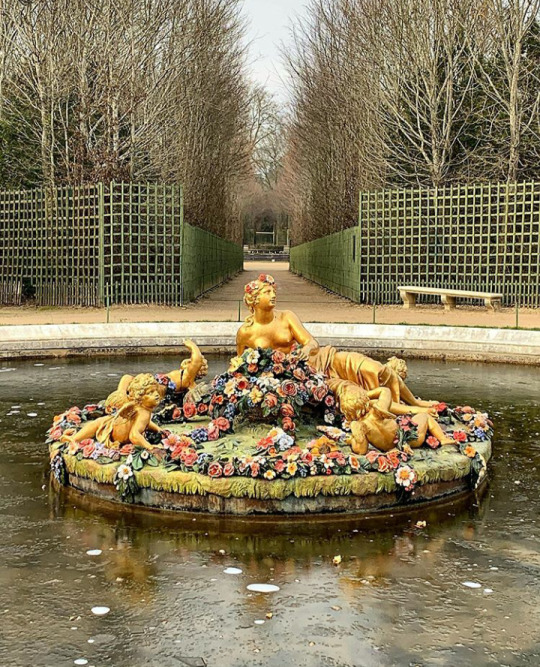
Allegory of Spring in Versailles.
This lead group covered with gold leaf belonging to all the seasonal pools, was created in 1674 by Jean-Baptiste Tuby after drawings by Charles Le Brun.
Goddess of flowes and rebirth of nature, Flora sits on a bed of flowers (roses, blueberries, anemones, heliotropes) and surrounded by amours playing with a floral garland
Source: patrimoinefrancilien on instangram
#versailles#garden#palace of versailles#chateau de Versailles#france#french architecture#french art#photography#nature#flowers#art#versaillessadness#myths#mythology#greek myths#flora#greek myth aesthetic#greek myth#greek myths aesthetic#golden#roses#gardens#sculpture#allegory#allegory of spring#aesthetic#beauty#beauty will save the world#1600s#17 century
52 notes
·
View notes